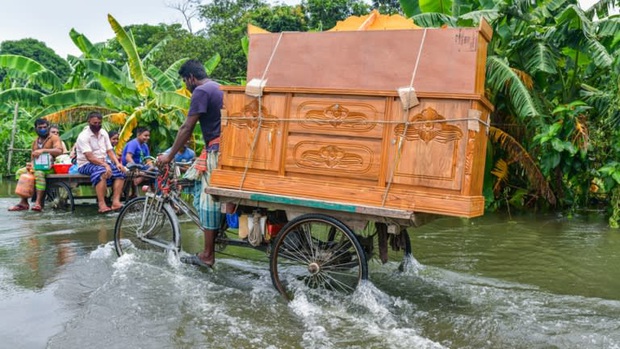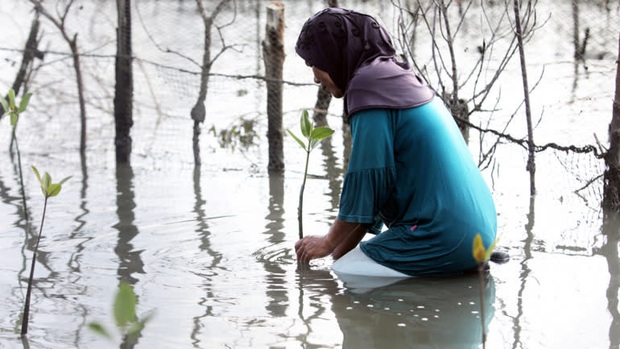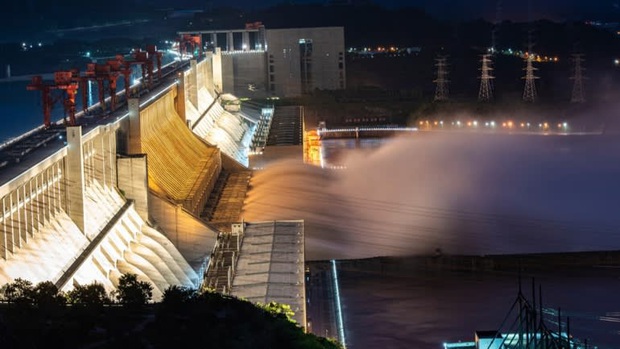Ms.Nobiron, a 54-year-old widow living near the Brahmaputra River in northern Bangladesh, watched her home be washed away, her possessions gone as massive floods swept through the village in June and July.
“I have never suffered so much from the floods. The house from the time my father left had drifted into the river with all the things I had saved in my life. I have nothing left”, Ms. Nobiron shared.

Bangladesh – a delta country that experiences floods every year – has been especially hit this year. At one point, one third of the territory was submerged under water.
Kaiser Rejve, director of CARE Bangladesh, said: “In recent years, the frequency of unusual flooding in the country has increased dramatically, causing serious damage to people and property. The recent floods also signal an increased frequency and intensity of flood and erosion risks in Bangladesh in the coming years ”.
However, this situation is not only experienced by Bangladesh but it is a regional problem. Since June, prolonged heavy rains have resulted in flooding in many areas in East, Southeast and South Asia, including countries such as Japan, China, Indonesia, Korea, Nepal, Pakistan, Mongolia and India. Millions of people lost their homes and hundreds were killed.
The impact from a natural disaster on the Asian economy is greater than that of any other continent in the world. In an August report by the McKinsey Global Research Institute, “by 2050, 75% of global capital at risk of flooding will be in Asia. The Indian subcontinent and the coastal territories of Southeast Asia will be the hardest hit ”.
Other metrics also forecast a similar scenario. A study published in the scientific journal Nature Communications last year estimated that by 2050, 300 million people will live in areas prone to climate-induced flooding. Most of the most vulnerable areas are Asian countries such as China, India, Bangladesh and Vietnam.
“Science is becoming more and more accurate. One thing we do know for sure is that wetter areas get wetter, and dry areas get drier, ”said Abhas K. Jha, an expert in the Urban and Disaster Risk Management program. World Bank East Asia and Pacific said.

In China, 2.7 million people have been evacuated and about 63 million people will be affected by the flooding by 2020. A total of 53 rivers in the country are at or near record highs. Many dams on the Yangtze River basin also lack water capacity, causing the worst flooding in southern China since 1961.
Meanwhile, in South Asia 17 million people have been affected this year and the situation is likely to worsen as heavy rainfall is forecast to occur in many parts of Asia this season.
For Japan, although people here are familiar with natural disasters, this year has also seen increasingly extreme weather. Record rains in Kumamoto prefecture on Kyushu island claimed the lives of at least 65 people in July. Last September, the Chiba prefectural areas in eastern Tokyo were hit by a massive storm that left at least 70,000 homes. damaged and disconnected houses, affecting tens of thousands of people.
While the risk of extreme rainfall may increase, that does not mean there will be floods every year. “Not only floods, but water currents can change or become more unpredictable,” said Homero Paltan Lopez, a water resource expert at Oxford University.

Currently, most countries around the world focus on cutting greenhouse gas emissions to reduce the long-term impact of climate change. However, in the case of floods, cutting greenhouse gas emissions in the short to medium term is ineffective. The current heavy rainfall and sea level rise are the result of ever-so massive emissions. There are also non-climatic factors, such as waves of migration and urban development, which also affect the social and economic impacts of floods.
Expert K. Jha explains: “It is estimated that about one million people move to urban areas every week.” Asia’s decades of economic boom fueled a wave of migration. Asian cities have added 200 million residents in the 10 years since 2000. This trend is most pronounced in China, while urbanization in Pakistan, Indonesia and India is also increasing. drastically increased.
“The risk of flooding in those areas means more people at risk. Population increases, people settle and build industrial infrastructure in flood prone areas, ”concluded Charles Iceland, Director of the Institute for Global Water Initiative.

